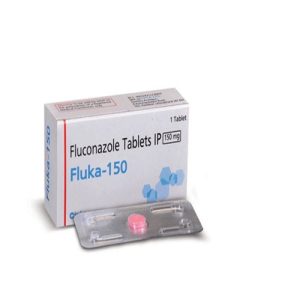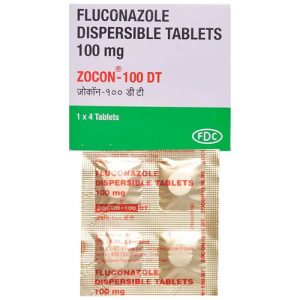From moderate to life-threatening, bacterial infections can affect anyone; prompt administration of antibiotics is therefore usually essential for effective treatment. Because Cleocin can fight a range of bacterial infections, it has been given extensively for decades. Knowing how Cleocin works and what to expect will enable you to guarantee safe and efficient treatment if you have been prescribed it.
We shall discuss in this post what Cleocin is, how it fights bacterial infections, the kinds of diseases it treats, appropriate use, possible side effects, and sensible advice to keep in mind.
What Is Cleocin?
Clindamycin is branded under the Cleocin name. It falls within a class of antibiotics sometimes referred to as lincosamides. Clindamycin targets particular kinds of bacteria, so it is useful for some illnesses caused by anaerobic bacteria and Gram-positive cocci unlike broad-spectrum antibiotics that act on a large range of bacteria.
Cleocin comes in several forms:
- Oral capsules
- Lotions and topical gels
- Injectable compositions
- Vaginal suppositories and creams
The type and location of the infection will determine the most suitable form your healthcare provider decides upon.
Get and stay hard at 98% less cost!
How Does Cleocin Work?
Cleocin acts to prevent bacterial protein production. It attaches to the 50S subunit of the bacterial ribosome, therefore stopping the bacteria from generating proteins necessary for their survival and development.
Depending on the dose of the medication and the kind of the implicated bacterium, this mechanism either kills the bacterium (bactericidal) or prevents their multiplication (bacteriostatic).
Infections Commonly Treated with Cleocin
Against a spectrum of bacterial illnesses, especially those brought on by some Gram-positive bacteria and anaerobic bacteria—which flourish in low-oxygen environments—cleocin is effective
1. Skin and Soft Tissue Infections
Often used for treatment is cleocin:
- Cellulitis
- Wounded by infection
- Boils and abscesses
- Staphylococcus aureus infections including several MRSA strains
2. Respiratory Tract Infections
One could be taken clindamycin for:
- Lung disease
- Infections of the sinuses
- Tonsillitis
- Throat and lung abscesses
3. Dental and Oral Infections
Many times, dentists write Cleocin prescriptions for:
- Periodontal (gum) infections
- Dental abscesses
- Post-operative prophylactic treatment, particularly for penicillin allergy patients
4. Pelvic and Abdominal Infections
Including:
- Pelvic inflammatory disease (PID)
- Endometritis
- Peritonitis
5. Bone and Joint Infections
Cleocin is sometimes used for:
- Osteomyelitis (bone infection)
- Septic arthritis
6. Malaria (in combination)
Sometimes malaria is treated with clindamycin in concert with other drugs.
How to Take Cleocin
Dosage
Your weight, medical background, and degree of infection will all help your doctor decide the proper dosage. Typical oral dosages are:
- Adults: Every six to eight hours, 150–450 mg
- Children: Doses for children are weight-based, usually 8–20 mg/kg/day.
Administration Advice
- Take oral Cleocin together with a full glass of water to avoid throat discomfort.
- Watch dosing intervals closely; do not omit doses.
- Finish the course even if early on you begin to feel better.
- For topical forms, follow directions exactly and apply just to the afflicted region.
Potential Side Effects
Though not everyone will have side effects, Cleocin can cause them like any medicine. Typical adverse effects comprise:
- Nausea or vomiting
- Diarrhea
- Abdominal pain
- Metallic taste in the mouth (with oral forms)
- Rash or skin irritation (with topical use)
Serious Side Effects (Seek Medical Help)
- Clostridioides difficile-associated diarrhea (CDAD): Cleocin can upset normal gut flora, causing severe, occasionally fatal diarrhea.
- Allergic reactions: Included in allergic responses are rash, itching, swelling, and trouble breathing.
- Liver function changes: Rare but probable; symptoms include yellowing of the skin or eyes
Warnings and Precautions
Before starting Cleocin, inform your healthcare provider if you:
- Particularly colitis or antibiotic-associated diarrhea, before beginning Cleocin.
- Reversibly allergic to lincomycin or clindamycin.
- Deal with kidney or liver diseases.
- Are you pregnant or nursing? Cleocin should be administered under medical supervision even if it is usually regarded as safe in pregnancy when needed.
If you have diarrhea while using Cleocin, also avoid using antidiarrheal drugs without seeing your doctor since it can aggravate the problem.
Drug Interactions
Cleocin might engage in interaction with:
- Erythromycin: Should not be taken concurrently since they antagonize one another.
- Muscle relaxants and anesthetics: Particularly during surgery, as clindamycin may improve neuromuscular blocking.
- Other antibiotics: Tell your doctor about any other antibiotics you now take.
Cleocin Resistance: A Growing Concern
Like many antibiotics, overuse or abuse of Cleocin can cause antibiotic resistance—where bacteria change to become less receptive to treatment. Minimizing this danger requires:
- Use Cleocin exactly as advised.
- Never distribute it to other people.
- Save not one extra antibiotic for use later on.
Final Thoughts
From skin disorders to more severe inside infections, cleocin (clindamycin) is a potent antibiotic absolutely vital in treating a range of bacterial diseases. Under the direction of a healthcare expert and used properly, it can be quite well tolerated and effective.
Like all antibiotics, though, it’s crucial to follow exactly recommended guidelines, be aware of possible adverse effects, and take required care to avoid resistance. See your doctor right away if you have any questions or have odd symptoms while on Cleocin.
Faq
1) What is Cleocin used for?
Cleocin (clindamycin) is an antibiotic used to treat serious bacterial infections such as skin infections, respiratory tract infections, bone infections, and some dental infections.
2) How does Cleocin work?
It stops bacteria from producing proteins needed for their growth, helping the body’s immune system fight the infection.
3) Is Cleocin effective against all types of infections?
No. It only works against bacterial infections, not viral infections like colds or flu.
4) How should Cleocin be taken?
It can be taken orally (capsules, liquid) or given by injection, always as prescribed by a doctor.
5) What are the common side effects?
Possible side effects include diarrhea, nausea, stomach pain, and rash. Severe diarrhea may signal C. difficile infection and needs medical attention.
6) Can I stop taking Cleocin once I feel better?
No. Always finish the full course to prevent bacteria from becoming resistant.
7) Who should avoid Cleocin?
People with a history of severe allergies, liver disease, or previous antibiotic-related colitis should use Cleocin only under close medical supervision.




